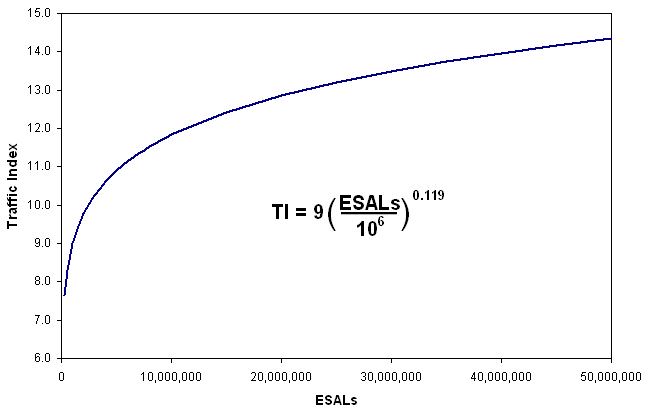Loads
Loads are the vehicle forces exerted on the pavement (e.g., by trucks, heavy machinery, airplanes). Since one of the primary functions of a pavement is load distribution, pavement design must account for expected lifetime traffic loading. Loads can be characterized by tire loads, axle and tire configurations, load repetition, traffic distribution across the pavement and vehicle speed.
 |
 |
| Figure 1: H-1 during rush hour. | Figure 2: Buses at Ala Moana. |
Load Characterization
- Tire Loads. Tire loads are the fundamental loads at the actual tire-pavement contact points.
- Axle and tire configurations. While the tire contact pressure and area is of concern, the number of contact points per vehicle and their spacing is critical. As tire loads get closer together their influence areas on the pavement begin to overlap, at which point the design characteristic of concern is no longer the single isolated tire load but rather the combined effect of all the interacting tire loads.
- Load repetition. Loads, along with the environment, damage pavement over time. The standard model asserts that each individual load inflicts a certain amount of unrecoverable damage. This damage is cumulative over the life of the pavement and when it reaches some maximum value the pavement is considered to have reached the end of its useful service life.
- Traffic distribution. On any given road, one direction may carry more loads than the other. Furthermore, within this one direction, each lane may carry a different portion of the loading. The outer most lane often carries the most trucks and therefore is usually subjected to the heaviest loading.
- Vehicle speed. In general, slower speeds and stop conditions allow a particular load to be applied to a given pavement area for a longer period of time resulting in greater damage. If mix design or structural design have been inadequate, this behavior is sometimes evident at bus stops (where heavy buses stop and sit while loading/unloading passengers) and intersection approaches (where traffic stops and waits to pass through the intersection).
Load Quantification
Pavement structural design requires a quantification of all expected loads a pavement will encounter over its design life. This quantification can be done in several ways:
- Equivalent single axle loads (ESALs). This approach converts wheel loads of various magnitudes and repetitions ("mixed traffic") to an equivalent number of "standard" or "equivalent" loads based on the amount of damage they do to the pavement. The commonly used standard load is the 18,000 lb. equivalent single axle load. Using the ESAL method, all loads (including multi-axle loads) are converted to an equivalent number of 18,000 lb. single axle loads, which is then used for design. A "load equivalency factor" represents the equivalent number of ESALs for the given weight-axle combination. As a rule-of-thumb, the load equivalency of a particular load (and also the pavement damage imparted by a particular load) is roughly related to the load by a power of four (for reasonably strong pavement surfaces). For example, a 36,000 lb. single axle load will cause about 16 times the damage as an 18,000 lb. single axle load. Table 1 shows some typical load equivalencies (note that spreading a load out over two closely spaced axles reduces the number of ESALs). Figure 3, using some approximations, shows some general vehicle load equivalencies - note that buses tend have high load equivalency factors because although they may be lighter than a loaded 18-wheeler, they only have two or three axles instead of five.
Load |
Number of ESALs |
18,000 lb. single axle |
1.000 |
2,000 lb. single axle |
0.0003 |
30,000 lb. single axle |
7.9 |
18,000 lb. tandem axle |
0.109 |
40,000 lb. tandem axle |
2.06 |

Figure 3: Some Typical Load Equivalency Factors
- Traffic Index (TI). The traffic index is associated with the California method of pavement structural design. Essentially, it has evolved in to a way of expressing ESALs as a single number or index (see Figure 4).

Figure 4: Traffic Index vs. ESALs
- Load spectra. This approach characterizes loads directly by number of axles, configuration and weight. It does not involve conversion to equivalent values. Structural design calculations using load spectra are generally more complex than those using a traffic index or ESALs because loading cannot be reduced to one equivalent number. Load spectra will be an option for use in the next AASHTO Design Guide.


